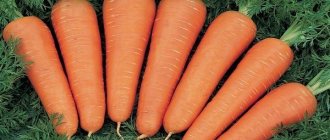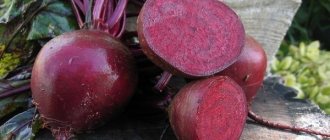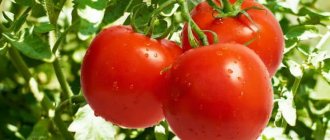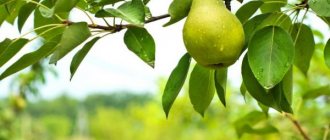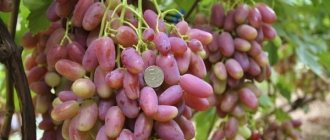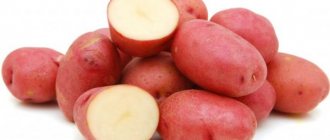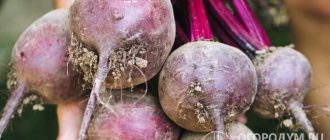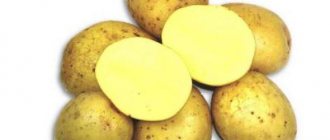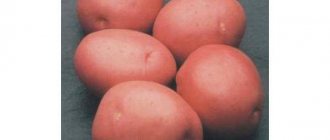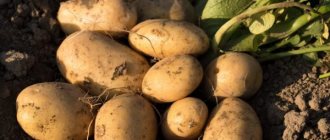Description of appearance
The dense crown of a small upright shrub consists of leaves of a rich dark green color. The fruits are distinguished by a slightly flattened round-flat shape and a small head. The weight of one beet, painted dark burgundy, varies from three hundred to five hundred grams. The color of the bright red tender pulp in some places turns into a purple hue.
The homogeneous consistency of the pulp eliminates the presence of white veins, which significantly degrade the quality of the beets. The core of the fruit is characterized by a crimson-red hue. The root vegetables, saturated with juice, taste sweetish. From one square meter of plantings you can harvest from five to eight kilograms of crop, which means that from a hectare of plantings you get from 50 to 80 thousand kilograms of fruit.
The exact indicators depend on the manufacturers of planting material. On the “Egyptian flat” bushes, the ovaries appear first compared to other beet varieties. The percentage of seed germination is very high - about eighty. "Egyptian Flat" is a variety with an average ripening period of 101 to 128 days.
When cultivated in more favorable conditions, root crops can ripen in as little as 90 days. The variety can be cultivated for commercial purposes, since the root crops tolerate transportation well without losing their attractive appearance.
Photo of the plant
Here you can see a photo of beets:
Description of the variety
Egyptian flat beet belongs to the table, mid-ripening varieties. Full maturity of root crops occurs 85–120 days after germination. The leaves grow in an erect rosette, no more than 45-50 cm high. The petiole is red, the leaf is dark green with red veins. Young leaves are used to prepare first courses and salads.
The shape of the beet is round-flat, the color is uniform, deep burgundy without white streaks. The taste is pleasant, juicy, moderately sweet. Egyptian beets are consumed fresh, canned and used in various culinary recipes.
The plant is biennial, but is grown as an annual, since the root crops ripen 4 months after planting. In the second year, the plants are left to produce seeds.
Origin and development
In Mediterranean countries, the culture of using beets for food and as a medicine has been known since the 4th century BC. These were wild deciduous varieties. The first mentions of the use of beets in Ancient Rus' date back to the 10th century. In the 19th century, the vegetable spread to all continents.
Gradually, differentiation and domestication of beets occurred. Today, it is common to divide varieties into fodder, sugar and table varieties. Canteens (vegetables) are most often used in cooking. “Egyptian flat” is a domestic variety, bred at the Agricultural Research Institute named after. V.V. Dokuchaev back in the forties. Over the past decades, Russian breeders have significantly improved the variety and endowed it with new qualities.
Landing region
Beets of the "Egyptian flat" variety are unpretentious and can be used for cultivation in any region of the country. In Russia it is grown in all climatic zones. It tolerates slight drops in temperature well and is tolerant of drought.
Ripening time
Mid-season varieties are vegetables whose full ripening occurs no later than 130 days from germination. "Egyptian flat" belongs to this group. Harvesting begins in the period from 110 to 120 days; under more favorable climatic conditions, the first root crops ripen within 90 days.
Productivity
The variety is high-yielding, experienced vegetable growers harvest from 1 sq.m. up to 8.5 kg of beets. The weight of one root crop ranges from 300 to 500 grams.
History of breeding
A variety of table beet called “Egyptian flat” was developed in 1943 by scientists working at the Research Institute of Agriculture of the Central Black Earth Zone named after V.V. Dokuchaeva. The basis for the new beet variety was foreign varieties.
The resulting variety is suitable for cultivation in the Volga, East Siberian, Central and Central Black Earth regions of the country. The variety is also recommended for cultivation in Kyrgyzstan, Tajikistan, Ukraine and Armenia. Over the past years, the variety has been repeatedly improved, acquiring new positive qualities.
What is the difference from other varieties?
The characteristics of the variety were identified experimentally and through observations. The bushes that emerge from seeds actively develop and grow quickly , gaining volume. From two grams of seed you can grow a large bed consisting of four rows.
“Egyptian flat” gives fifty percent germination in unfavorable conditions, including frequent rains and the presence of a large number of weeds around. Root crops, even in such conditions, will turn out strong and healthy.
Advantages and disadvantages
Advantages:
- rich color and pleasant sweetish taste of root vegetables;
- pulp of uniform consistency, absence of white veins;
- the flat shape at first glance does not look aesthetically pleasing, but has a number of advantages: it is convenient to put root vegetables in a pan or in a storage container, and it is also easier to chop;
- resistance to drought and flowering.
Flaws:
- small fruits may dry out during storage and not survive until the end of winter;
- sometimes germination drops to fifty percent, this is influenced by the seed manufacturer and the conditions in which they were kept and sown.
Step-by-step instructions for planting and care
The plant is biennial, but is cultivated as an annual because the fruits reach full maturity four months after planting. The bushes are left for the second year to obtain seeds from them.
- Purchase of seed material .
“Egyptian flat” is cultivated in all regions of Russia, as it tolerates drought and low temperatures well. You can purchase seed material in gardening stores or online stores at an average cost of twenty rubles per small bag. - Boarding time .
When grown in areas with a warm climate, the seeds are placed in open ground in March; for cold regions the period is extended to May. The average daily air temperature should not fall below eight degrees. Autumn planting is not popular, since winter frosts and returning spring frosts can destroy the first shoots. - Selection of location and soil
Ten or twelve grams of seeds are sown in a plot of ten square meters. They follow the rules of crop rotation, so beets are planted in an area where cabbage, cucumbers or tomatoes were previously grown. The place should be well lit so that the gardener can get the maximum amount of harvest.The ideal option is soil with neutral acidity. Slightly acidic soil is made suitable by adding ash or lime. Acidic soils are not suitable for growing beets, but acidity can be neutralized with lime and boron fertilizers.
The alkaline soil is acidified by adding compost consisting of maple and oak leaves, peat moss and pine and spruce needles. If you do not optimize the alkaline soil for growing Egyptian Flat, the fruit will begin to rot. Planting holes are prepared in the fall. The earth is dug up and fertilized.
- Planting process.
The planting process includes the following steps:- To begin with, the seeds are prepared. Select whole specimens of large sizes, without damage. The seeds are hardened by filling them with warm water, and then placing them on the bottom shelf of the refrigerator for a week.
In the selected area, beds are made with an interval of twenty centimeters.
- Planting material is placed in the ground, buried three centimeters, leaving a distance of ten centimeters to the neighboring seed.
- If sowing is done in a cold region, be sure to sow in a greenhouse.
Temperature .
The optimal temperature for seed germination is ten degrees. Shoots can be seen after 23 days. The maximum temperature for seedlings is 26 degrees; further increases have a negative effect on plantings.- Watering .
The crop is watered abundantly, trying not to flood it and not keep it in a state of drought, which negatively affects the formation of fruits. Water the bushes in the evening to avoid burns due to moisture getting on the leaves. On a hot day, water evaporates quickly, so the crop does not have time to be completely saturated. When fruits begin to form, the frequency of watering is increased. - Feeding .
The seedlings are fed for the first time at the stage of appearance of the fourth leaf, using fertilizers rich in nitrogen. The second time the crop is fertilized during fruit formation, adding potassium and phosphorus to the soil. - Other care measures .
After each watering, the soil must be loosened and mulched so that the moisture stays in the ground longer. Such procedures also help to prevent active weed growth.
Features of agricultural technology of the variety
The Egyptian flat beet variety has been cultivated in Russia for more than 70 years, and therefore has no secrets in cultivation. Yields and shelf life can be influenced by following basic agrotechnical practices. However, one should not expect extraordinary results.
Sowing beets
In most cases, the quality of planting material is mediocre, so you need to prepare it first. Dummy seeds are separated from good ones using a water-salt solution (a tablespoon of table salt per glass of water). It is enough to soak the seed in it for 10 minutes: empty specimens will float to the surface and will be easy to remove.
When sowing in winter, the seeds are not soaked; when sowing in spring, they can be soaked until they swell, this will speed up germination. It is advisable to treat against fungal diseases, especially in regions with cool and damp spring and summer. To do this, you need to soak the seeds for 20 minutes in a pale pink solution of potassium permanganate (potassium permanganate).
It is allowed to use two landing patterns: regular and two-line. With the usual row spacing, there should be at least 40 cm; with a two-line row, a double row is made, with a distance in the middle of about 25 cm. The row spacing with this method will be 50 cm. Reducing these values is undesirable: beets need oxygen and sunlight for normal development; thickening it responds with a decrease in the diameter and weight of root crops.
The depth of embedment in the soil is 2 cm for spring and 3 cm for autumn planting.
Plant care
Caring for Egyptian flat beets is standard: weeding, careful loosening, watering. Thinning is important, which is carried out in two stages:
- In the phase of two full leaves, leave a distance of 5 cm between plants.
- When four full leaves appear, thin out, leaving a distance of 10-12 cm.
There is no point in feeling sorry for the plants and leaving them in the hope of getting more harvest. There will be more root crops, but their diameter will become much smaller, and the total mass of beets per square meter of bed will also decrease.
Water the plant as the soil dries. There is no need to be zealous in this regard: high humidity worsens the taste and can cause fungal diseases.
After watering, loosening is necessary, otherwise the resulting earthen crust will interfere with aeration. The work should be carried out carefully so as not to damage the root crops. The drip irrigation system, which is turned on as needed, saves the day. After such irrigation, a crust does not form and the frequency of loosening can be reduced.
Beet feeding
Egyptian flat beet favors fertilizing, but is capable of accumulating harmful substances or developing more tops, and therefore it is important not to overdo it. It is recommended to carry out two main feedings. The first is done after the first thinning. They use nitrogen-containing compounds - urea, chicken manure, mullein. The second feeding is carried out when the tops grow, when the row spacing is practically invisible. At this stage, superphosphate and potassium chloride are used.
Fertilizer application rates can be viewed in the table.
| Fertilizer | Consumption rate (per m2) |
| Urea | 10 g |
| Chicken droppings with water (1:12) | 10 l |
| Mullein with water (1:10) | 12 l |
| Superphosphate | 8 g |
| Potassium chloride | 10 g |
If you don’t want to use chemicals in your garden, at the second stage you can sprinkle the rows with wood ash.
Throughout the season, it is important to monitor the condition of the tops. If it turns red, this is a sign of sodium deficiency. It can be replenished by adding wood ash at the rate of 200 g/m2. If light yellow spots appear on the surface of the leaf, watering with lime milk (200 g/10 l) will help.
Feeding and fertilizers should be applied after watering, this way there is less risk of damaging the roots.
Harvest and storage
- Three weeks before harvesting, the beets stop being watered.
- As soon as the fruits are ripe, harvesting begins, which is carried out in warm weather without precipitation.
- Bushes are pulled out from loose soil by hand, and from hard soil they are pulled out using a pitchfork.
- The fruits are dried and cleared of lumps of earth. The tops are cut off.
- Root crops are stored in cellars, placed in wooden boxes and sprinkled with river sand.
The variety is characterized by high keeping quality ; under certain storage conditions, the fruits can remain excellent until March, without losing their beneficial properties and attractive appearance. Most often, “Egyptian flat” beets are eaten in autumn and winter.
Reviews
Tatiana
The beet variety Egyptian flat soot has been cultivated for a long time, it’s all about the pleasant taste. The vegetable looks beautiful in the beds and does not require special care. I plant in May and thin out after the shoots appear. Excess sprouts are planted in a neighboring bed, after which I place them in a stimulating solution.
Veronica
The variety has virtually no drawbacks, the root crop develops well, and harvesting occurs in August. We store vegetables in the garage in winter; the root crop survives well until spring.
Natalya Stepanovna
I have been planting straight Egyptian beets for several years in a row before winter. I sow the seeds in the fall in dry soil in place of the cucumbers, cover them with soil, and cover them with leaves. In the spring, I partially remove the mulch and pinch out dense shoots. I don’t water the garden bed very often, I fertilize it twice. On the 80th day, the first root crops are harvested.
